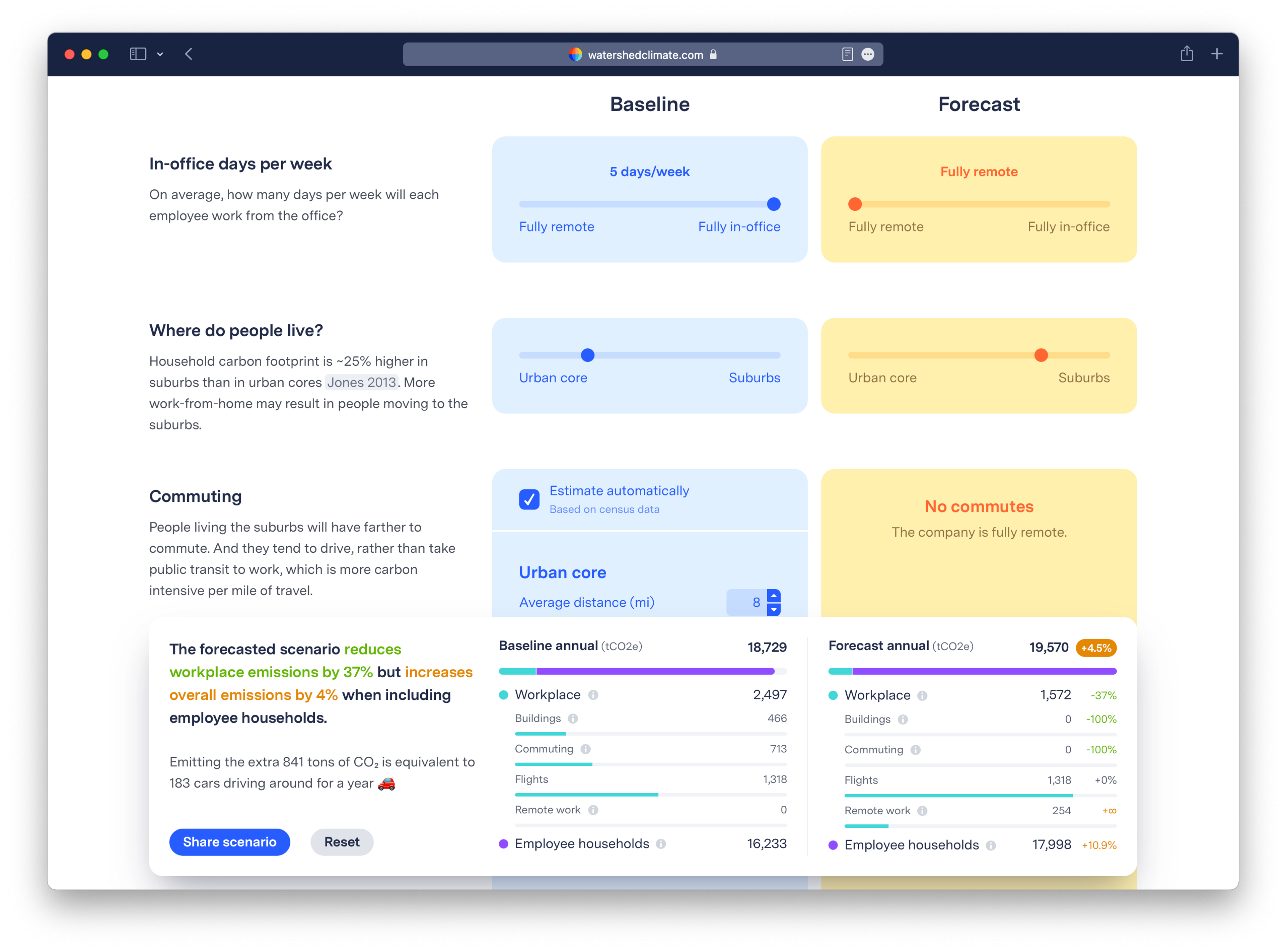In the coming months, companies will invite millions of employees back to work as we (hopefully) turn a corner on COVID-19. As companies invent new ways to work (fewer than 1 in 5 say they’ll return to their pre-pandemic model), we have a once-in-a-generation opportunity to rethink the carbon impact of the workplace.
Many people think the climate-conscious choice is to keep as much of the team working remotely for as long as possible. The reality is more complicated. Remote work shifts carbon: emissions from energy and food still exist, but at employees’ homes, where they may be better or worse than in the office.
The aggregate impact will be different for every company. What percentage of employees power their homes with clean power? What’s the carbon cost of Uber Eats vs the company cafeteria? Have a large percentage of employees moved to the suburbs and purchased huge gas guzzlers instead of biking to work?
We’ve worked with companies like Shopify and Square to analyze all this in detail, surveying employees on their remote work setups, and crunching data on millions of corporate purchases. Today, we’re publishing a free calculator to share what we’ve learned with all businesses. We hope it’s thought provoking for leaders making these decisions, and results in climate being part of the decision matrix for a broad range of companies.

There are a few ways companies can design their new working models to be low carbon for the long haul:
- Clean power for work—in the office and at home. Clean power has become a mainstay for corporate climate programs, but traditional purchases don’t cover energy consumption outside the office. If your company is considering a remote-heavy work plan, you can purchase clean power for remote workers’ homes too—either by funding employee upgrades to local clean power programs (like CleanPowerSF in San Francisco) or purchasing enough clean power company-wide to cover remote workers.
- Business travel. For many companies, air travel is an even bigger source of emissions than powering offices. Much of the historic fall in emissions in 2020 can be attributed to a near-suspension of travel. But the long-term trend is unclear. Will people travel less after returning from COVID, thanks to better acclimation to remote work? Are there better policies companies can put in place to ensure travel stays low? Or on the flip side, because more employees may move to farther-flung suburbs or even entirely different regions, does travel actually go up?
Here, more than anywhere else, the choices companies make about where and how people are working post-pandemic will shape their long-term footprints. For an average 100-person startup, reducing round-trip flights per employee from 3 to 2 a year could cut as much as 20% from the company's workplace emissions. - Don’t forget household emissions. The biggest climate impact of workplace decisions may occur off the company’s carbon balance sheet, in the footprints of employee households. Research shows that suburban households emit 25% more carbon than urban ones, thanks to bigger homes and more driving. If a shift to remote work encourages people to move from cities to suburbs, total global emissions could increase even as company carbon inventories fall. Policies that encourage low-carbon living (like more generous reimbursements for public transit than parking) can prevent this shift.
There’s never been a better time to rethink how work gets done. Businesses have a rare opportunity to decouple growth (which we want!) from carbon emissions (which we don’t!), and come back from COVID stronger than ever while lowering their impact on the environment. The decisions companies make in the next few months about where and how people work will have percentage-point impacts on global emissions for years to come.
Let us know if we can help.












